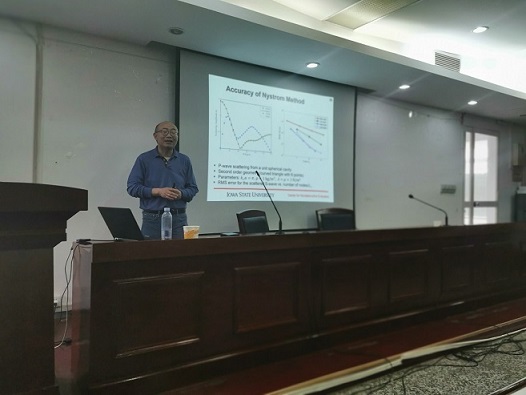On October 9, at the invitation of our institute's instrument department, Jiming song, Professor of electrical and Computer Engineering Department of Iowa State University, made an academic report entitled "efficient modeling of electrical and ultrasonic wave propagation and applications in non-destructive evaluation" in the academic lecture hall on the 7th floor of our institute. Professor Song Shoupeng, director of the instrument department of our college, presided over the conference, which was attended by more than 100 teachers and students of our college.
In the report, Professor Jiming song first outlined one of the greatest equations, Maxwell's equation. Then, it is shown that computational electromagnetics and acoustics are the research fields of numerical solution of Maxwell equations in frequency and time domain. It is widely used in modeling and Simulation of electromagnetic wave and ultrasonic propagation and scattering, radar cross-section and antenna design, semiconductor devices and RF devices. Then, the fast multipole method and the fast and effective algorithm, which are similar to the fast Fourier transform, have been developed. They can solve large-scale problems on a small computer. Finally, the advantages, low complexity and numerical results of the fast algorithm are introduced.
At the end of the report, Professor Song interacted with the teachers and students of our hospital and made a clear explanation of the questions, which made our teachers and students have a deeper understanding of the effective modeling of electromagnetic wave and ultrasonic propagation and its application in nondestructive testing.

Professor Jiming song is engaged in the research of fast algorithm in calculation of electromagnetic field, electromagnetic model and simulation calculation of interconnection on Lossy silicon and RF components, wave propagation in metamaterials, NDT of electromagnetic wave and ultrasonic, transient electromagnetic field, etc. He is now a member of IEEE fellow and aces. He has co authored one monograph and published more than 60 academic papers and 150 conference papers. In 2006, he won NSF career award.
